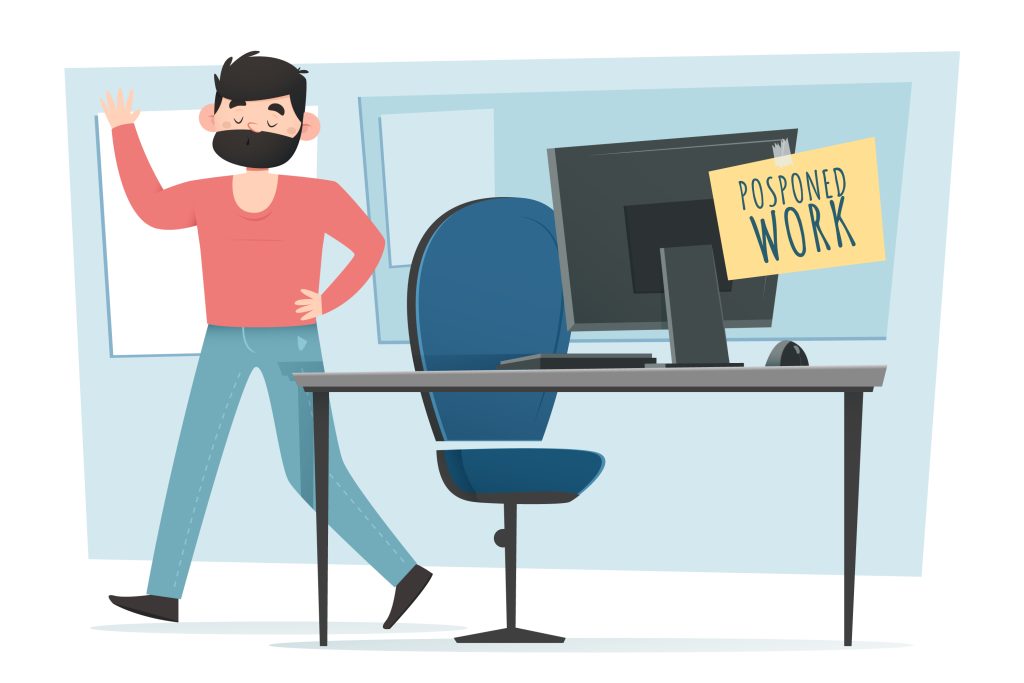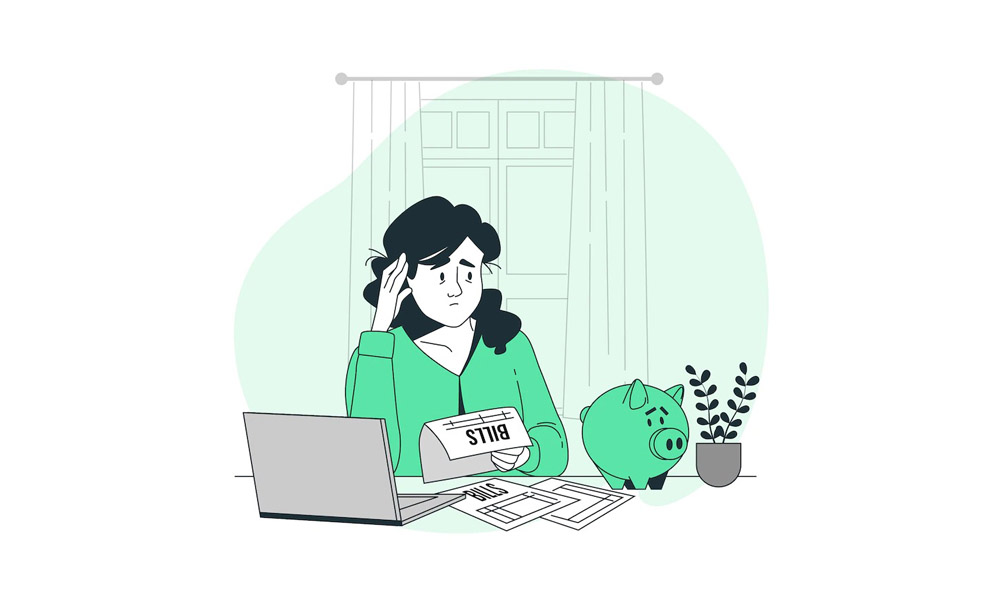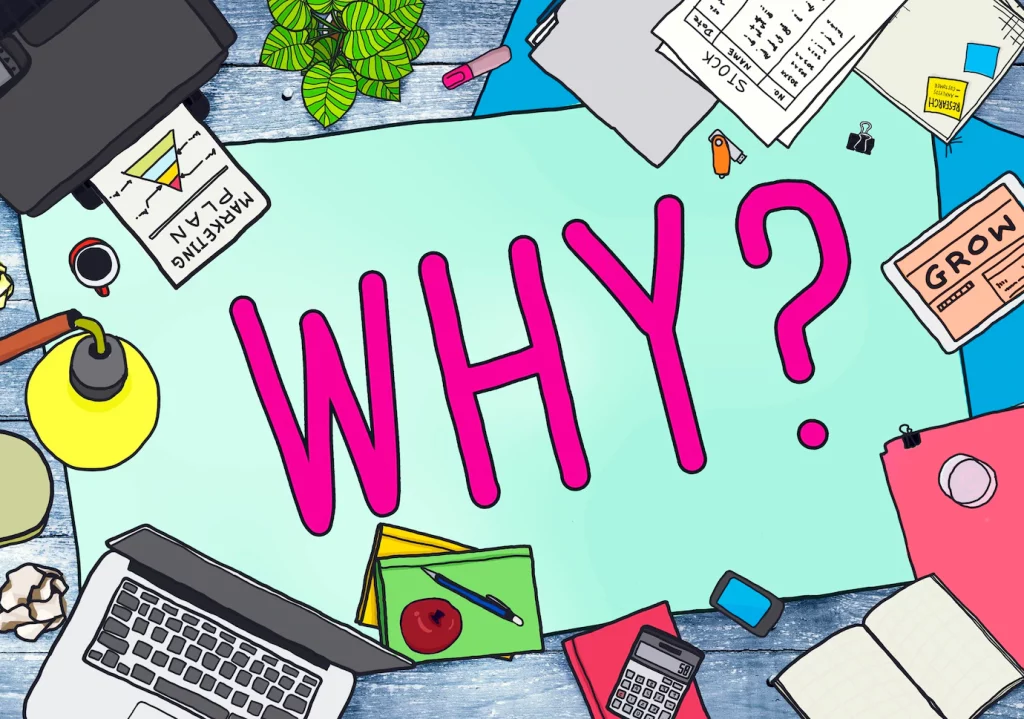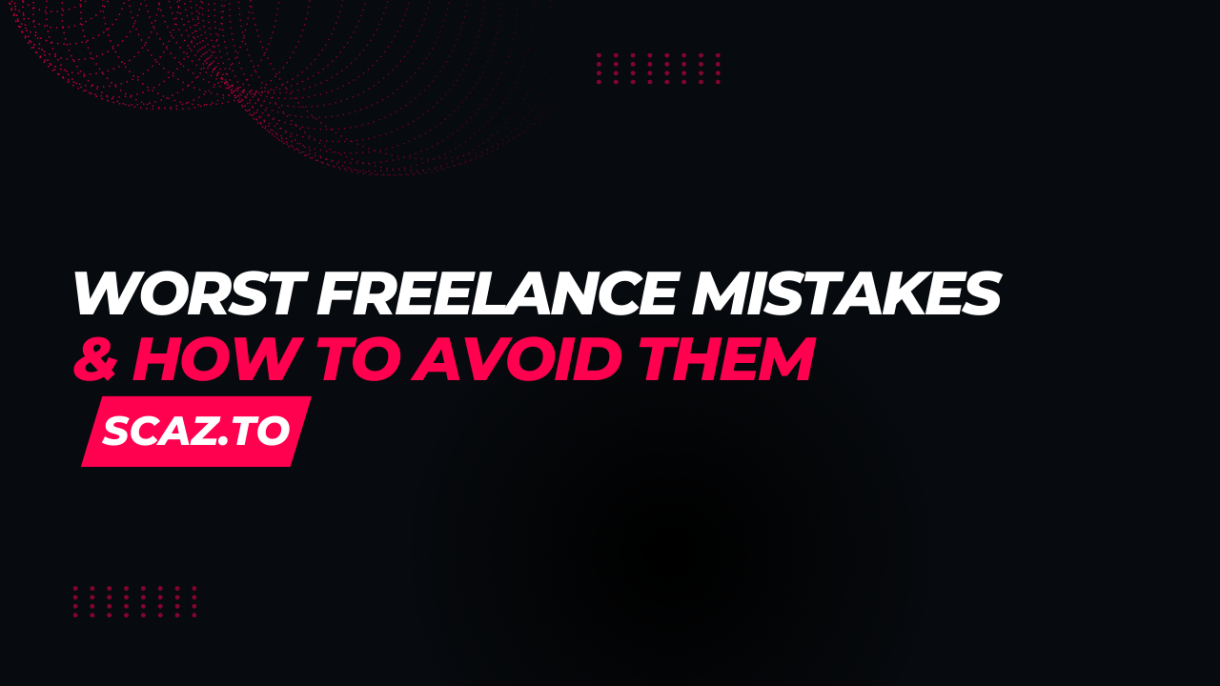
Are you constantly being turned down by customers? Or do your clients keep asking for discounts? Or for more revisions?
Then see if you’re making these freelancing mistakes.
But don’t worry. We all make mistakes when we start out. It’s how we learn to get better.
It was Albert Einstein who once said, “A person who has never made a mistake has never tried anything new. Of course, we can’t learn new things without taking risks, and sometimes we make mistakes. But if you make the same mistake twice, it will cost you.
Most freelancers make a lot of mistakes when dealing with clients and often wonder why they don’t get enough work or why they have to chase clients just to get their bills paid. Some even give up too easily after experiencing failure after failure.
I’ve made a lot of mistakes in my freelance career. But I also learned to avoid most of them by learning from the mistakes of other freelancers. And you can do the same.
Here are some of the mistakes you should always try to avoid in order to become an excellent freelancer.
1. Offering Discounts

Clients often ask for discounts, especially when applying for jobs on freelance marketplaces. And it’s up to you to stand your ground in these discussions.
Of course, there are ways to make your client feel better and still charge the right amount.
But the worst part is when freelancers offer discounts without the client asking. This is what leads to bidding wars on freelance sites like UpWork and Freelancer.com.
And it’s the worst possible way to throw your freelance career in the trash.
Every time you discount your services, you send a signal to the client that devalues your work. And it will also hurt your reputation as a freelancer.
The key is to find the right clients who value your talents.
2. Terrible Communication Skills

Learning how to talk to clients, write great emails, and create killer project proposals are all important elements that will make you a better freelancer.
Clients are more experienced in dealing with freelancers. And they can spot an amateur from the first message they receive.
The way you address the client in an email or the way you phrase your messages can send strong signals about your work ethic and experience.
You don’t have to take courses or have a degree in English Literature, just knowing how to write a great email or have a pleasant conversation with a client is more than enough.
You can start by reading this guide to writing emails and talking to clients.
3. Accepting More Than You Can Handle

A few years ago, I took on a large project to deliver 20 1500-word articles in 20 days. I was already working on two other projects at the time, but I was too greedy to turn down the opportunity. Back then, it took me two days to complete an article, and this time I wanted to challenge myself to see if I could do more. And I was so terribly wrong.
I managed to deliver the project on time, and the client was happy with the results. But I had to work all day to manage all the projects, and by the end of the month I was too exhausted to continue. Worst of all, I wasn’t able to deliver my usual high quality work at that time.
He never came back to order more. Probably because of the poor quality of my work. I lost a valuable client.
From that day on, I decided not to accept more than I could handle, no matter how good it sounded.
The point is, it’s important to pace yourself when you take on new work. I know you have bills to pay and rent to pay. But try not to be too greedy and think about your career in the long term.
4. Working For Free

I know the thrill you get when a client responds to your proposal and says they’ve decided to give you the project. It’s a great feeling, right? This month’s rent is covered.
But don’t get too excited, because these clients may be ripping you off.
Not all clients are honest and trustworthy, some try to manipulate you to get what they want and never pay you for it. Asking for free sample work is a common method some clients use to get their projects done by a number of freelancers without paying them for their work.
Another method is to cancel the project at the last minute after you have sent your work for final review. Most clients will simply ignore you after you deliver the work. What are you going to do, sue them?
You need to prepare for these situations. First of all, never give free samples and never work for free. And try to get them to sign your proposal if you can.
If a client wants you to do part of their project, calculate the price you’d charge for that part and ask them to pay for your work up front.
Always ask your clients to deposit a percentage of your total payment before you begin work. If you’re using a freelance platform, have the client break the project into small goals so that you get paid each time you deliver a piece of the project.
5. Not Knowing How to Price Your Services

Finding the perfect price for your services can be difficult when you take on projects of varying sizes. But if you don’t find an appropriate way to charge for projects early in your career, it will hurt your credibility in the long run, and you won’t be able to raise your prices.
According to a study by Contently, 38.6% of freelancers have only made $10,000 a year, which is even less than $900 a month. Only 19% were able to earn more than $50,000.
Charging low rates is a mistake that almost all freelancers make on sites like Upwork and Freelance.com. These sites are designed to lower your standards and force you to work for less. But if you’re confident in your skills and experience, you should fight for your place and charge your clients reasonably.
6. Assuming You Know Everything

Technology moves faster than the blink of an eye. And you need to evolve with it to be more competitive and a more relevant freelancer in your industry.
You may be an expert copywriter or an expert SEO analyst, but if you think you know everything, you will avoid trying to learn new skills. Or keep up with the latest news in your field. Eventually you’ll hit a dead end, or someone else with much higher skills and lower rates will come along to replace you.
There’s nothing wrong with learning a few new skills to improve your work and your skills. Subscribe to all the top blogs in your industry and keep up with the latest trends.
I use Skillshare to learn a new skill every month. It’s a solid investment that keeps me on top of my freelance career. If you can’t afford premium courses, use YouTube and other free sites like eDX.org.
7. No “Rainy Day” Fund

When you start making more money than you expected, it’s easy to get a little carried away and spend beyond your usual budget. After all, what’s the point of making money if you can’t spend it on the things you love, right?
Sure, you’re free to do whatever you want with your money. Just remember to put a small amount of your earnings in the bank every month, just in case. Think of it as your retirement or rainy day fund.
Freelancing has its ups and downs. You might make $5,000 one month and $100 the next. You can never be sure what to expect in this field. So make sure you have a rainy day fund to cover your expenses during those tough times.
This is the one mistake that forces freelancers to quit their careers and go back to day jobs because they don’t plan ahead. Don’t make the same mistake.
In Conclusion
I always refrain from calling myself an expert because even though I have gained a lot of experience over the years, I know I still have a lot to learn. Socrates was right: “The only true wisdom is to know that you know nothing.
So keep learning, find ways to challenge yourself, and strive to be a better freelancer!


